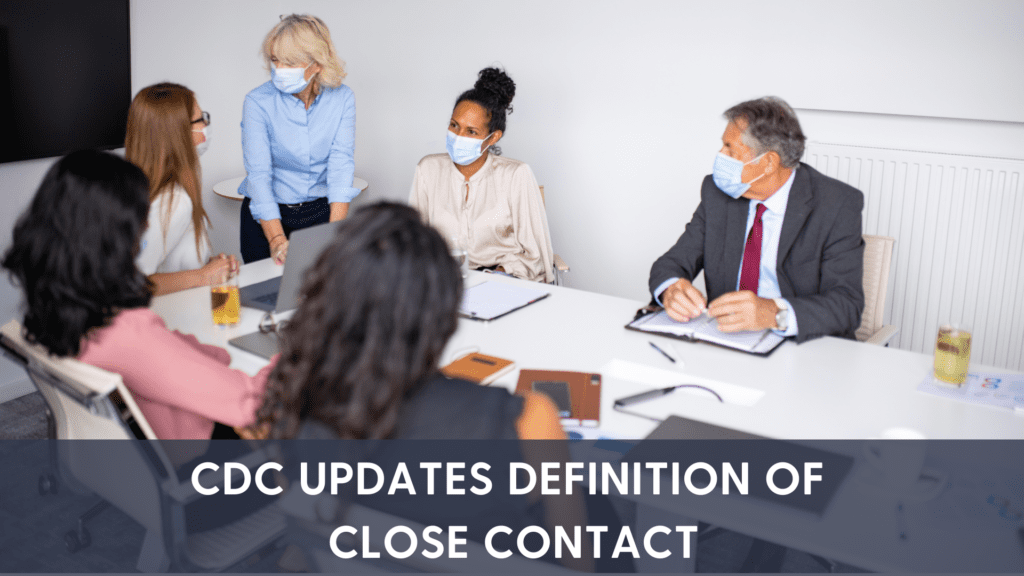CDC UPDATES DEFINITION OF CLOSE CONTACT FOR COVID-19
The CDC recently updated their definition of “close contact”. The new definition was updated on October 21, 2020 and states:
Someone who was within 6 feet of an infected person for a cumulative total of 15 minutes or more over a 24-hour period* starting from 2 days before illness onset (or, for asymptomatic patients, 2 days prior to test specimen collection) until the time the patient is isolated.
What has changed?
The update focuses on “cumulative” exposure vs. a single straight uninterrupted 15-minute exposure to an infected person.
*What is Cumulative Exposure?
Cumulative exposure consists of multiple individual exposures added together over a 24-hour period, rather than just one ongoing instance of a 15-minute exposure. (e.g. three 5-minute exposures during a 24-hour period for a total of 15 minutes).
Factors to consider when defining close contact are:
- Proximity: Closer distance likely increases exposure risk
- Duration of Exposure: Longer exposure time likely increases exposure risk
- Whether the infected individual has symptoms: The period around onset of symptoms is associated with the highest levels of viral shedding
- If the infected person was likely to generate respiratory aerosols: (e.g., was coughing, singing, shouting)
- Other environmental factors: Crowding, adequacy of ventilation, whether exposure was indoors or outdoors, etc.
Special Consideration Regarding Face Coverings: Because the general public has not received training on proper selection and use of respiratory PPE, such as an N95, the determination of close contact should generally be made irrespective of whether the contact was wearing respiratory PPE/face covering. At this time, close contact is determined regardless if the individual is wearing a fabric face covering or not.
Click here to view CDC info
Need more information or assistance? Call us at (805) 483-1995 or email us at info@barkleyrisk.com.


